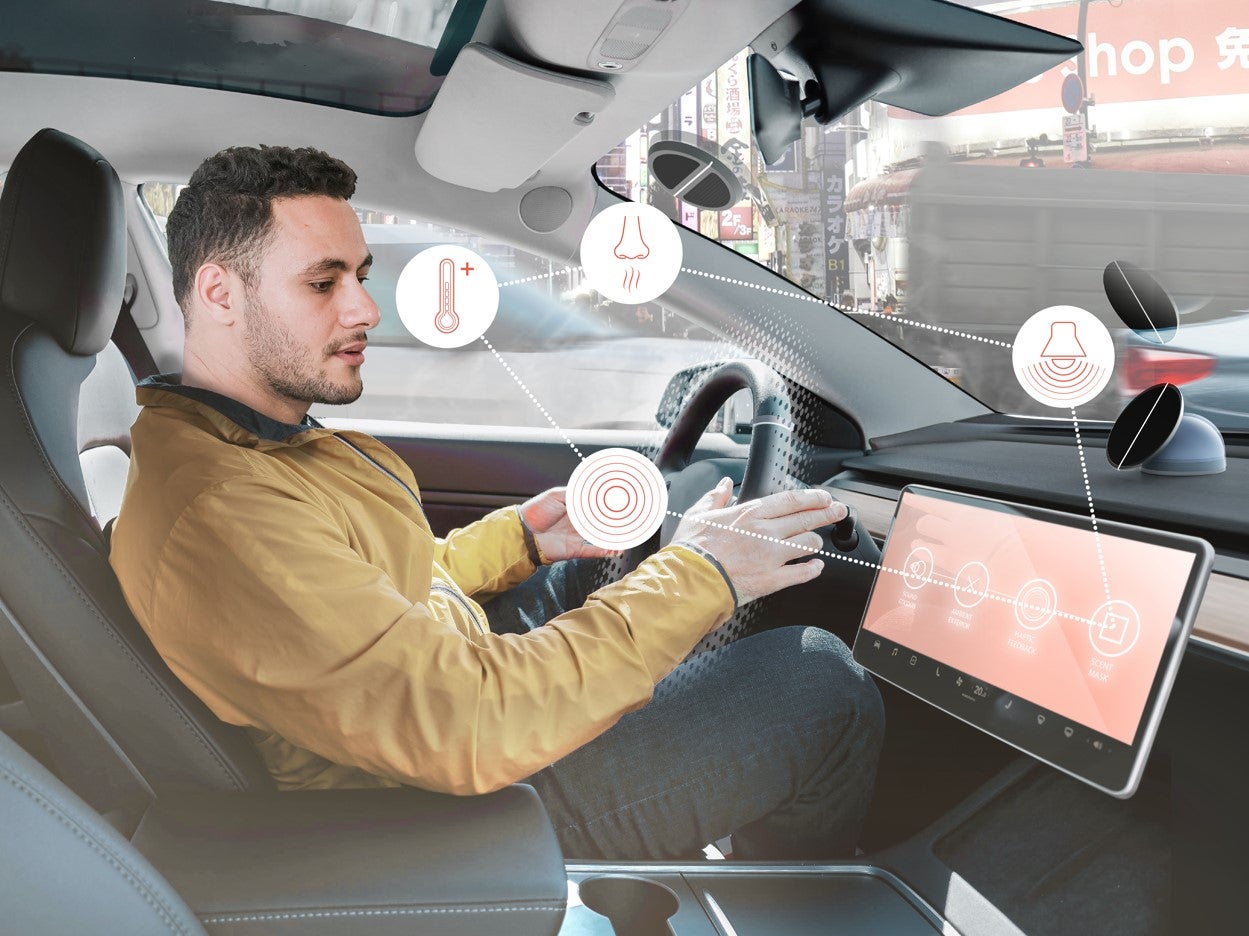
Anxiety and stress have a detrimental effect on the way we drive our cars, could the introduction of new concept technology help?
New research from Brake, the UK road safety charity, and the insurer Direct Line, has shown that anxiety and anger behind the wheel in Britain has increased since the first national pandemic-related population lockdown, in March 2020.
The findings also revealed that drivers admit that negative moods are having a detrimental effect on their driving. The research found that nine in ten drivers admit to feeling stressed or angry while behind the wheel of a car.
With this in mind, creative studio NewTerritory has made further developments to its multi-sensory immersive application technology. It is hoped the technology can revolutionise the automotive experience and significantly reduce driver stress levels.
We spoke to Tim Smith, design, and creative technology director, NewTerritory, to find out more about this new concept and how it will alleviate drivers of their stress.

Just Auto (JA): What developments/changes have taken place since our last interview?
How well do you really know your competitors?
Access the most comprehensive Company Profiles on the market, powered by GlobalData. Save hours of research. Gain competitive edge.

Thank you!
Your download email will arrive shortly
Not ready to buy yet? Download a free sample
We are confident about the unique quality of our Company Profiles. However, we want you to make the most beneficial decision for your business, so we offer a free sample that you can download by submitting the below form
By GlobalDataTim Smith (TS): The multi-sensory rig is designed in such a way that it is malleable and can be re-configured and iterated upon in an agile fashion. For that reason, we’ve been able to quickly increase the fidelity of certain multi-sensory outputs, such as a more sophisticated haptic system, while also adding new features, like a new olfactory speaker method.
We’ve also introduced more virtual reality scenes to test new scenarios and developed some of the interactive programming to give us greater control of the simulated scenarios and metaverse capabilities.
Generally speaking, we’ve been able to increase the level of immersion for both more accurate simulation for testing purposes and also rich brand experiences in fun new ways.
How can the developed device assist drivers in enhancing their driving experience?
The device itself is capable of reading a driver’s or passenger’s physiology, from gaze detection to heart rate, the data from which we can run through our Mood Algorithm to get an understanding of their stress and excitement levels.
In turn, we’re also able to affect these stress levels with multi-sensory stimuli – which we call ‘interventions’ – including sight, sound, smell, taste, heat, haptics, airflow and so on. This creates a circular human machine teaming interaction in which we first understand the individual’s stress levels and then can respond with multi-sensory interventions, which in turn affects those stress levels that we can read to understand the efficacy of our interventions in order to react responsively.
The illustrated use case shows a multi-sensory approach to alleviating stress while driving, but there are many more applications for the passenger too, such as immersive multi-sensory content consumption or in-car to outside-real-world gaming experiences.
The device splits into different parts. Could you explain how and why?
Disassembly is essential to the concept due to the 4D spatial nature of the in-car environment. Certain sensory inputs are better placed in certain areas; for example, heart rate monitors on the steering wheel, whilst other sensory outputs are also best placed in various areas, such as haptics in the seat.
The device is an aftermarket mechanism that can essentially turn any car into a smart multi-sensory experience capable car. For more modern cars, there is potential for Bluetooth connectivity, in which we can augment the in-car technology with the device’s.
We noticed that people may want to take this device from car to car, so we designed it in a way that it can be easily reassembled like an intuitive puzzle that also offers a tray for car keys, so that the user keeps the two together and therefore is less likely to accidentally leave the house without it.
What are the next steps for the project?
We wish to continue to build, test and learn through user testing to increase the efficacy of the device.
We’re also looking at and experimenting with new materials and finishes to increase the appeal of the device. It is currently in its concept phase, but we’re looking to bring it into reality.
Is there anything else that you would like our readers to know?
The potential of this tech can expand to most automotive environments. Whilst our main focus has been the traditional in-car experience, we are currently exploring the application for HGV drivers as well as new versions for commercial space flight.







